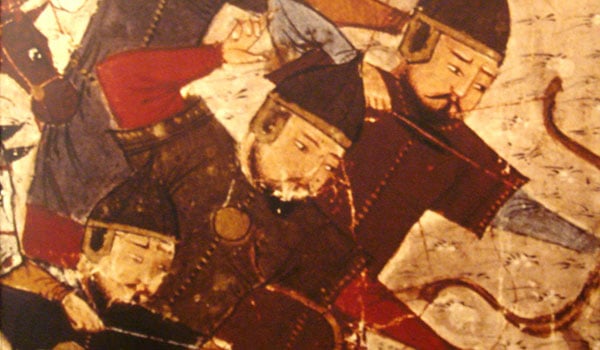
May 1966: Brigadier General Robert R. Williams observed many “Firsts” accomplished through the employment of Airmobility in Vietnam: one of these being the result of the Pleiku campaign, 23 October-26 November 1965:
The enemy was routed from his hiding places, hounded and pursued, fragmented and destroyed, in terrain he had believed would be his protector. Certainly nothing in the enemy’s background or training had prepared him to cope with the full effects of an unleashed airmobile pursuit.

Mongol archers
Historical parallel: Genghis Khan’s Mongols. Arguably history’s most superb mounted horsemen used superior mobility and speed to destroy opposing armies, on the way to building the largest contiguous land empire ever conquered by military means. This was accomplished in the following manner:
First, the Mongols decimated an enemy Field Army; then took up the chase to eradicate the remnants. Small strongpoints or towns were overwhelmed prior to larger cities or fortresses. This is turn created a refugee problem for the larger cities, posing a strain on resources; as well as the spreading of the tales of woe concerning the brutality of these people from the Steppe.*
In addition, the Mongols used refugees to inflate their numbers, creating the impression of an invasion force larger than actually existed. Refugees served another purpose: If a target city was surrounded by a moat, one method of crossing was to throw the captives into the waterborne barrier so as the Mongol cavalry could ride over them.
In turn, the vanquished leader was pursued until he was killed; thereby preventing him from organizing another army. Muhammad Khwarazmshah II is an example here. With the Khwarazm Empire being destroyed, he fled, with Mongol cavalry dogging him relentlessly. He found refuge on an island in the Caspian Sea; though he would die of dysentery in late 1220 or early 1221.
Indeed the U.S. Army’s use of air cavalry as referenced above by General Williams, is an elaboration of tactics employed eight centuries before by Genghis Khan.
* Prior to his war with Genghis Khan, Muhammad Khwarazmshah endeavored to collect intelligence on the victorious Mongol Army. “. . . he sent envoys to gather information. They reported seeing a white mountain that, from a distance, they thought was snow, but as they came closer they saw it was a pile of bones. One envoy commented that on part of the road, the ‘ground had become so greasy and dark with human fat, that it was necessary for us to advance another three stages on the same road until we came to dry ground again.’ They also reported that at one city 60,000 virgins and girls leapt to their deaths to avoid capture by the Mongols.” See page 115, chapter 8, “At War With the Mongols,” The Mongol Art of War, by Timothy May.










